Dan Daniel
Subscriber
Just to be consistent, a spot meter IS a reflective meter. It reads a narrow area, that is all.
The following is from page 23 of "Beyond Basic Photography, a Technical Manual" by Henry Horenstein. We used this book as the text book in a medium format photography class at university.
"Incident light is the light that falls on the subject. It is measured by a light meter with a white diffusing material covering its cell. ... The diffuser is made to absorb just enough light to produce a an exposure reading similar to a gray card reading (or to a general reading of a normal-contrast subject).
To make a reading, hold the incident meter at the subject position and point it back at the camera position. Use the indicated reading without correction. Like a gray card, an incident meter avoids specific subject tones and provides an average reading."
At a meter where you can change the dome/flat diffusor for direct metering you will see that the diffusor itself has 18% transmission.
Thus when metering directly off an 18% grey-card and then doing with same meter an incident metering, you will get same result.
This is incorrect.An incident meter doesn't give you camera settings for "the correct exposure", it gives you camera settings for placing the light you measured at middle gray. If you meter in bright sunlight, the settings it gives you will consider that sunlight to be middle gray (and your shadows and midtones will be darker/underexposed) and if you meter in a dark shadow, it will consider the shadow to be middle gray (and your shadows will be brighter).
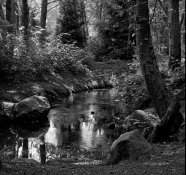
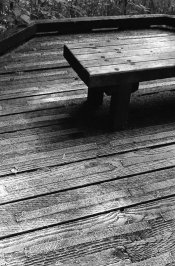
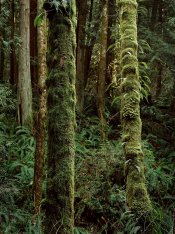
Your first sentence is awkward but the rest makes sense.An incident meter doesn't give you camera settings for "the correct exposure", it gives you camera settings for placing the light you measured at middle gray. If you meter in bright sunlight, the settings it gives you will consider that sunlight to be middle gray (and your shadows and midtones will be darker/underexposed) and if you meter in a dark shadow, it will consider the shadow to be middle gray (and your shadows will be brighter).
On black and white or color negative film, you want to "meter for the shadows", so take your reading from a relatively shady (but not extremely dark) part of the scene. This is because negative film is good at keeping detail in the highlights when there is a lot of light, but not good at keeping detail in the shadows when there isn't enough light. Slide film and digital cameras are not as good at holding detail in highlights when there is a lot of light.
Try metering in a shady part of the scene. Think about whether you want that shady part to be middle gray, lighter, or darker, and how that will affect the other parts of the scene, then put in your camera settings.
This is correct, if your major concern is shadow detail, and you are prepared to let the other tones fall where they may.Your first sentence is awkward but the rest makes sense.
In Beyond The Zone System, Phil Davis gives advice to meter in the shade but double the Exposure Index. I internalize that by thinking... yes use incident meter in the shadow, but then make that shadow area look dark (like it’s supposed to look) by closing down one stop.

This is incorrect.
If you are metering from the subject's position, and the light hitting the meter is the same light as the light hitting your subject, an incident meter reading will give you an exposure that:
1) renders an 18% grey as an 18% grey;
2) renders a dark shadow as a dark shadow; and
3) renders a highlight as a highlight.

Why did you use different meters for each circumstance?+1, this sums it all up.
I must admit when I shot professionally I mostly used incident readings for transparency film. For colour C41 and B&W I used reflective readings, sometimes a spot reading.
Like any tool it is important to know which one to choose and when to use it.
Why did you use different meters for each circumstance?
My dome can be taken off so the meter can be use for certain "flat disk" circumstances. What are they and how does this work?
I'm not foc, but the reason you might use the reflected light reading with a negative material is because a workflow that separates the process into separate film exposure and later "printing" allows you to incorporate your later printing manipulations into your exposure (and development) calculations.Why did you use different meters for each circumstance?
Thanks - I'll be sure to share your observation with my wife!As seems to be his usual habit, MattKing is entirely correct here,

When reading the fill and main lights, with the flat disc, do you have to apply offsets to the readings? Or do you use the displayed readings off the meter?The flat disks are used primarily for document copy work, but they also permit careful analysis of the directional components of lighting - e.g. separate readings of the main and fill light.
You don't just apply the readings.When reading the fill and main lights, with the flat disc, do you have to apply offsets to the readings? Or do you use the displayed readings off the meter?
My dome can be taken off so the meter can be use for certain "flat disk" circumstances. What are they and how does this work?
The colour C41 and B&W that I shot, I also processed and printed myself so I had a lot of control over my shots from start to finish. Since colour print film has very good exposure latitude I felt I could get good exposure and prints with reflected readings. The camera I used for most of my work was an Olympus OM4ti which had a very good light meter and a built-in spot meter.
E6 transparency film had a smaller exposure latitude that C41 films and I sent those out for processing. I had shot some transparencies with reflective and then I tested incident and I prefered the incident shots, so I used it on all transparency shoots.
I have never used the flat disks, just the dome. The flat disk would suggest to me that it is used for a more directional reading. The dome is taking in almost 180 degrees of light falling on your subject. Since you put the incident meter in front of your subject with the dome pointing towards the camera, you get a good average reading of the light falling on the subject, regardless of the subject's reflectance.
The flat disk would take in a much smaller angle, a bit like a reflective spot meter reading. You could use the disks for taking readings if the subject had strong directional lighting and /or deep shadows.
I am sure someone with experience using disks can give you more details.
Anyhow a flat disk is used to measure for even lighting on flat copy or artwork. When the art is lit, you
then measure the eveness of light by moving the meter to different areas of you subject.. Different
readings shows a brighter or dimmer lighted area. The goal is the same reading over the entire work.
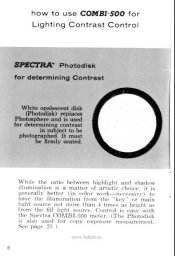
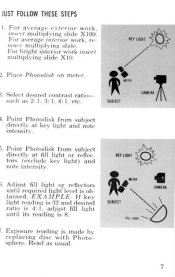
My dome can be taken off so the meter can be use for certain "flat disk" circumstances. What are they and how does this work?
The flat disk was provided for photograpy of flat art (drawings, charcoal etchings)
My vintage Sekonic actually has a flat disk to use instead of the dome. My modern Sekonic has a 'retractable' disk which simulates the flat disk. With no disk the meter acts as a regular averaging reflected light meter that you point at the subject from the camera.My dome can be taken off so the meter can be use for certain "flat disk" circumstances. What are they and how does this work?
| Photrio.com contains affiliate links to products. We may receive a commission for purchases made through these links. To read our full affiliate disclosure statement please click Here. |
PHOTRIO PARTNERS EQUALLY FUNDING OUR COMMUNITY:  |